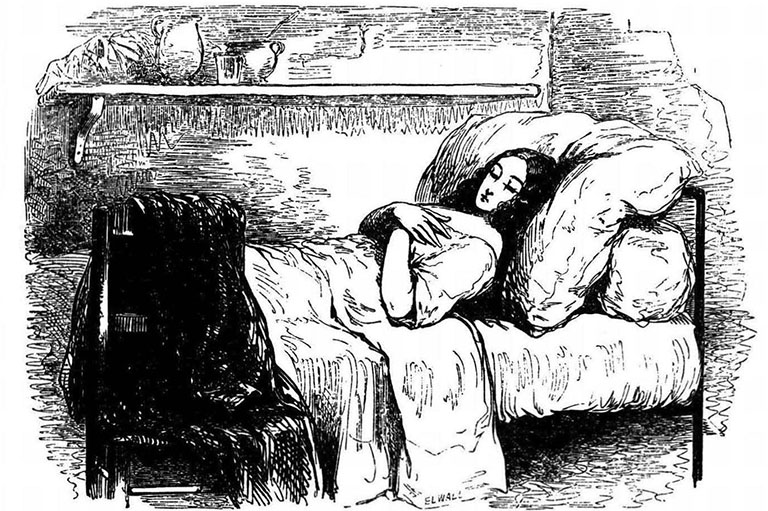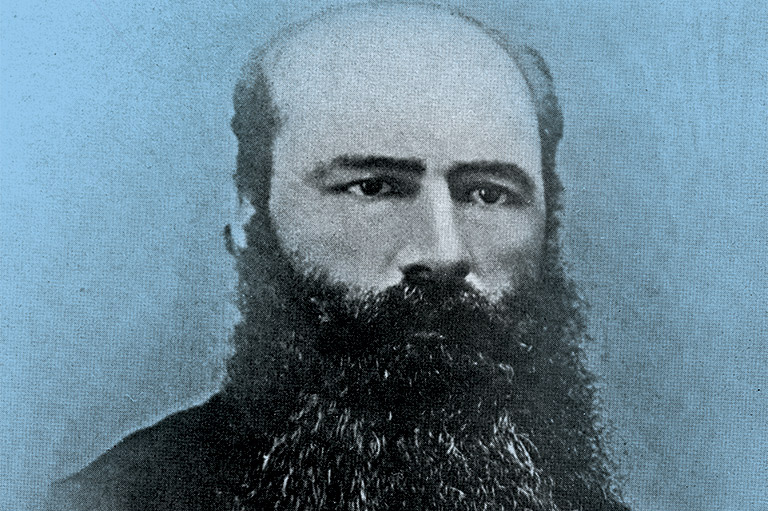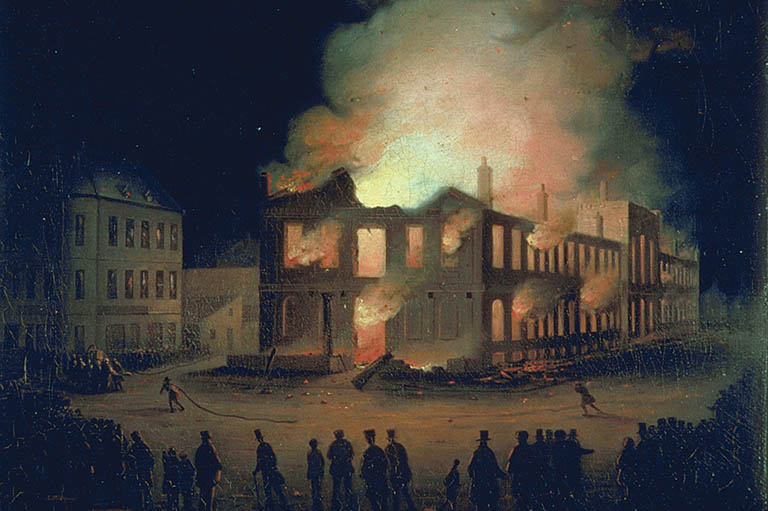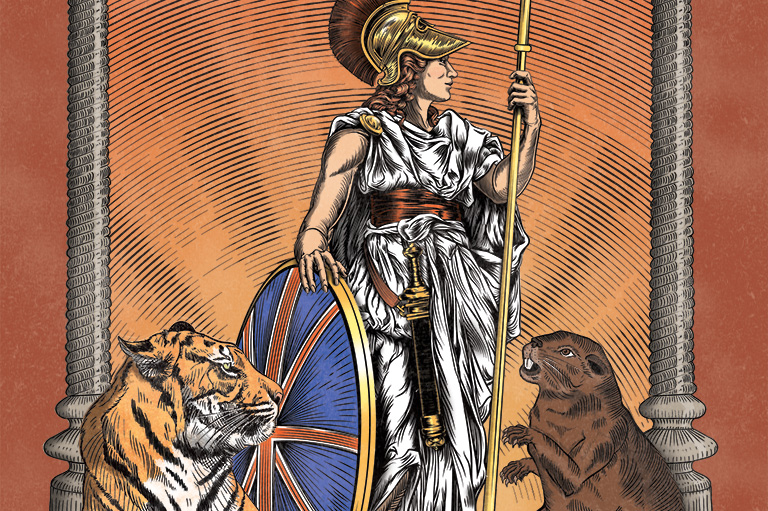Slow Road to Tolerance
-
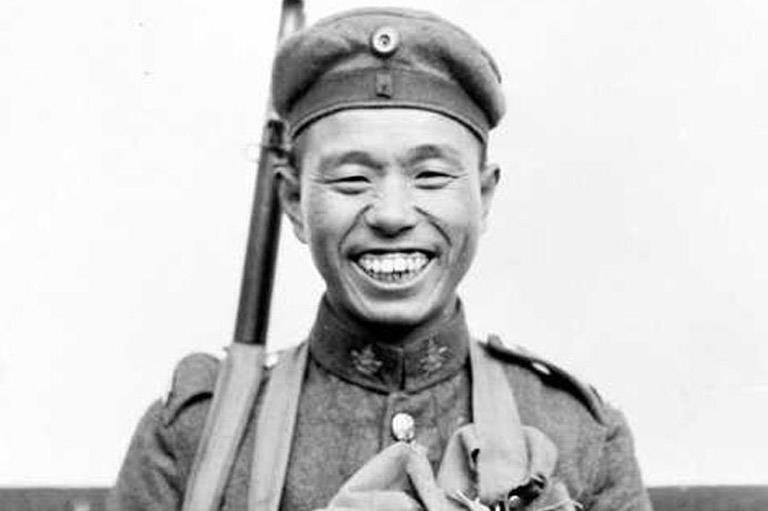 A Japanese-Canadian soldier in 1917.Library and Archives Canada
A Japanese-Canadian soldier in 1917.Library and Archives Canada -
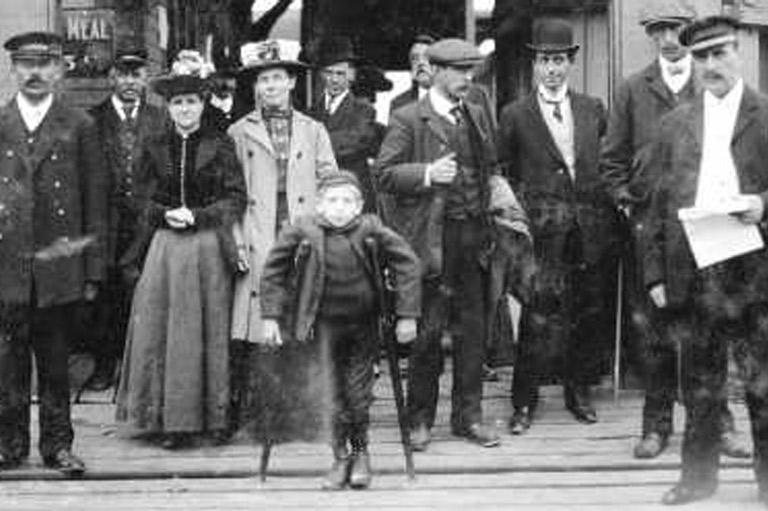 Immigrants deported from Canada, 1912.U.S. Holocaust Memorial Museum
Immigrants deported from Canada, 1912.U.S. Holocaust Memorial Museum -
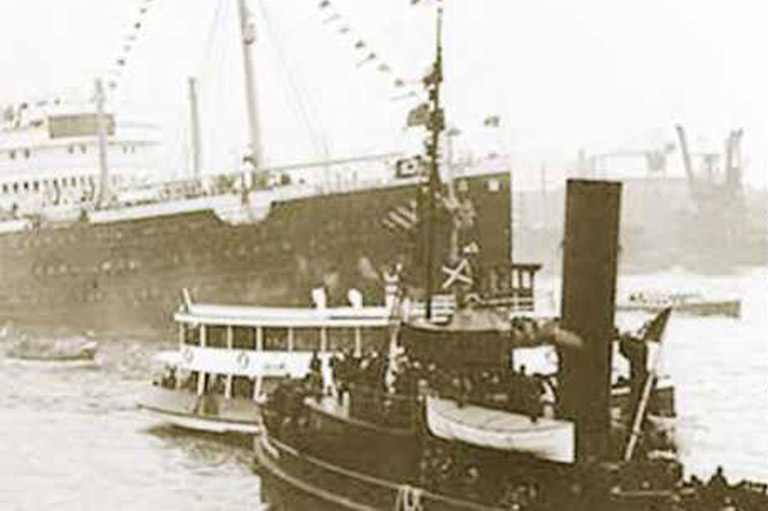 MS St. Louis, filled with Jewish refugees in Hamburg, Germany, 1939.U.S. Holocaust Memorial Museum
MS St. Louis, filled with Jewish refugees in Hamburg, Germany, 1939.U.S. Holocaust Memorial Museum -
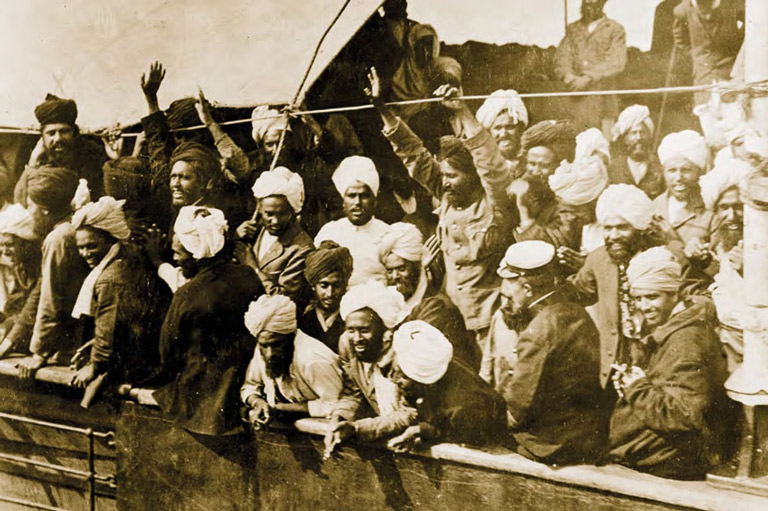 Passengers aboard the Komagata Maru in Vancouver in 1914. They were not allowed to come ashore, and most had to return to India because of Canadian exclusion laws.Library and Archives Canada
Passengers aboard the Komagata Maru in Vancouver in 1914. They were not allowed to come ashore, and most had to return to India because of Canadian exclusion laws.Library and Archives Canada -
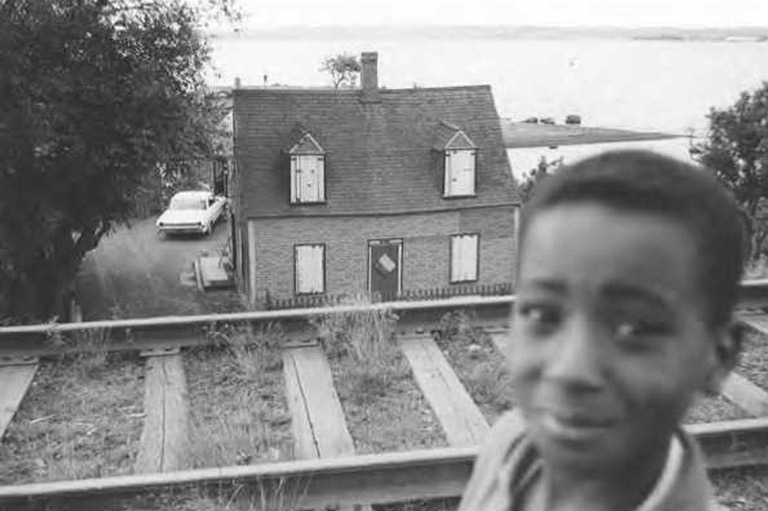 A boy in Africville, a black community in Halifax razed in the 1960s.Bob Brooks / Nova Scotia Archives
A boy in Africville, a black community in Halifax razed in the 1960s.Bob Brooks / Nova Scotia Archives -
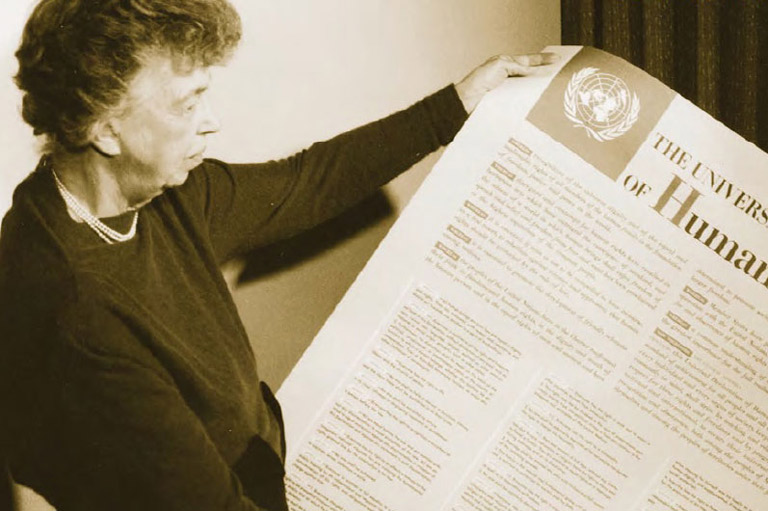 Eleanor Roosevelt, widow of former U.S. President Franklin Roosevelt, holds a copy of the United Nations Declaration of Human Rights in 1948.United Nations
Eleanor Roosevelt, widow of former U.S. President Franklin Roosevelt, holds a copy of the United Nations Declaration of Human Rights in 1948.United Nations -
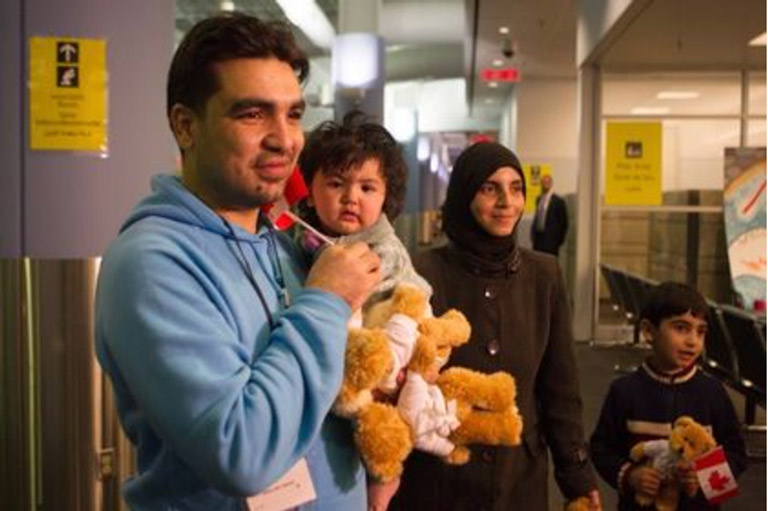 A Syrian Refugee family arrives in Toronto in December 2015.Canadian Press
A Syrian Refugee family arrives in Toronto in December 2015.Canadian Press
It’s hard to say when attitudes in Canada began shifting towards a more tolerant, multicultural society. Perhaps it began with the Holocaust.
News of the mass extermination of Jews in Europe first began circulating in 1942. While difficult to believe, and often relegated to the back pages of newspapers, the stories were hard to ignore. One report by The Canadian Press out of London, England, on June 24, 1943, contained the horrifying claim that Jews in occupied Poland were being “steamed to death” by the Nazis. The story by reporter Scott Young was based on information supplied from the Polish underground with details about major Nazi-run “extermination camps in eastern Poland.”
The story was incorrect about the gruesome method of death — millions of Jews were being killed by lethal Zyklon B gas, not steam — but it was accurate in reporting that mass murder of horrific proportions was taking place in Nazi-occupied Europe. From 1943 onward, newspapers and magazines started carrying more and more reports of the mass killings. Later, the full extent of what had taken place was documented at the Nuremberg trials, and a new word was created to describe what had been attempted — genocide.
The revelations about the Holocaust marked the start of a gradual shift in attitudes towards Jews and other minorities. But it was definitely a slow journey on the path to the multicultural tolerance of which Canadians are so proud today. In October 1946, around the time the first Nuremberg trial of Nazi war criminals had concluded, a Gallup poll showed that Canadians believed Jews were the second-least-desirable immigrant group — the Japanese were the least wanted. German immigrants were far more popular, despite the atrocities of the war. Regardless of any perceived sympathy for Jewish Holocaust survivors, Canada made it extremely difficult — as it had before the war — for Jewish as well as other eastern European refugees to enter the country. Their status persisted as immigrants of which Canadians should be wary.
The entrenched prejudice that defined Canada as a white, Anglo-Saxon, and Christian country had deep roots going back more than a century. J.S. Woodsworth, a disciple of the social gospel and one of the founders of the Co-operative Commonwealth Federation (the predecessor of the New Democratic Party), was a saint of a Canadian politician. Yet he believed, as he wrote in his 1908 book, Strangers Within Our Gates, that, in order to prosper, new immigrants should assimilate the values and customs of Canadian society as stipulated by the WASP majority. From Woodsworth’s perspective, British, Scandinavian, German, and French immigrants made much better Canadians than Jews, Eastern Europeans or Asians. The prospects for Black and First Nations people were even more dismal, in his opinion.
Before 1950, few Canadians who were of British or French descent would have subscribed to the views of Jane Addams, a Nobel Prize-winning American social activist. Addams, who in 1889 opened a settlement house in Chicago to provide a variety of services to the immigrant population, argued that the culture and customs newcomers brought with them were of value to society as a whole. Her views were ahead of her time, as were those of Horace Kallen, a Harvard-educated philosopher who, in 1924, coined the term “cultural pluralism” to advance the then-radical notion that diversity, rather than conformity, was a positive development.
Instead, in an age when the concept of race was paramount, Canadian academics, church leaders, physicians, social reformers, philanthropists, and politicians expressed grave concern about foreigners they viewed as undesirable, impoverished, uncivilized, and immoral — in short, a danger to the health and future of Canadian society. As one Toronto public school teacher succinctly put it in the years before the First World War, Canadians are “tidy, neat, and sincere — foreigners are not.”
With 7 uniquely curated newsletters to choose from, we have something for everyone.
Born in 1874, William Lyon Mackenzie King, prime minister for much of the period from 1921 to 1948, held typical views on race and immigration. In his diary, King routinely referred to Black people by ethnic slurs, ruminated a great deal about Jews, who he generally considered “undesirable” — he went to great lengths to ensure that no Jews bought property anywhere near his Kingsmere estate in Gatineau, Quebec — and feared an influx of Asian immigrants. On August 6, 1945, after King was told that the United States had dropped an atomic bomb on Hiroshima, he wrote in his diary, “It is fortunate that the use of the bomb should have been upon the Japanese rather than upon the white races of Europe.” Undoubtedly, he was not the only white Canadian to think so.
In May 1947, in a major speech on the federal Liberal government’s postwar immigration policy, King made it clear that Canada would continue to be selective regarding which immigrants it permitted into the country and that restrictions on immigration from Asia, in place since the mid-1880s, would not be lifted so as not “to change the fundamental composition of the Canadian population.” King assured Canadians that he was not being discriminatory. “I wish to make it quite clear,” he declared, “that Canada is perfectly within her rights in selecting the persons whom we regard as desirable future citizens. It is not a ‘fundamental human right’ of any alien to enter Canada. It is a privilege.”
King’s reference to fundamental human rights was aimed at the deliberations on the proposed Universal Declaration of Human Rights (UDHR). In 1946, the United Nations had appointed Eleanor Roosevelt to head an international committee to study human rights and to enshrine in a charter the “four freedoms” articulated by her late husband, former U.S. President Franklin D. Roosevelt — freedom of speech and belief and freedom from fear and want. A Canadian legal scholar, John Humphrey of Montreal, was appointed director of human rights for the UN Secretariat and played a key role in drafting the UDHR.
For nearly two years, the UDHR presented problems for King and other Canadian politicians, such as Lester Pearson, who was appointed secretary of state for external affairs in 1948. All expressed concerns about how a sweeping protection of human rights would be interpreted. Though the UDHR was not intended to be a binding document, the federal government recognized that there would be a moral imperative to adhere to it, despite the vague language of many of its clauses.
Throughout 1947 and 1948, while the UDHR was being debated, Canadian officials pondered what impact the charter might have had on the federal government’s decision to intern more than twenty thousand Japanese in 1942 (most of whom were naturalized or Canadian-born), or on its treatment of Aboriginal Canadians, who were being denied their cultural and political rights as well as being compelled to send their children to residential schools. In the mounting global tension that triggered the Cold War, the government worried, too, about the need to curtail the rights of communist groups. Questions were also raised as to whether the federal government’s support of the UDHR infringed provincial jurisdiction under the British North America Act.
In early December 1948, there was so much anxiety about the UDHR in Ottawa that, on instructions from Prime Minister Louis St. Laurent (King’s successor) and Pearson, the Canadian UN delegation in Paris abstained from the preliminary vote on the UDHR draft. Thus, instead of initially standing with the United States and Britain, whose leaders were fully committed to the UDHR, Canada found itself on the side of the Eastern Bloc.
Considering that a Canadian, Humphrey, had drafted the declaration, Canada’s refusal to vote on it created a mild sensation at the UN gathering. No one was more shocked than Humphrey: “Although I knew that the international promotion of human rights had no priority in Canadian foreign policy,” Humphrey wrote later, “it had never occurred to me that the government would carry its indifference to the point of abstaining in such an important vote. I could hardly have prevented the scandal even if the delegation had taken me into their confidence, but I could at least have warned them of the company in which they would probably find themselves.”
A few weeks later, during debate at the UN General Assembly on the final version of the UDHR, Pearson attempted to explain, rather weakly, Canada’s decision to have its reservations about the draft of the charter on the record and reaffirmed the country’s commitment to human rights. When the vote was taken on December 10, 1948, Canada, as had been the government’s plan from the start, supported the UN’s adoption of the UDHR, with the hope, as Pearson stated, “that it will mark a milestone in humanity’s upward march.”
It is not easy to measure the immediate impact of the Holocaust and the UDHR on Canadian attitudes, but prejudicial attitudes endured among a majority of Canadians. From British Columbia to Nova Scotia, for example, restrictions against Jews at resorts and at golf and social clubs continued. While researching the article “No Jews Need Apply,” published in Maclean’s on November 1, 1948, Pierre Berton discovered that the magazine’s parent company, Maclean Hunter, did not hire Jews, either. “It’s company policy,” he was told.
That same year, a young Jewish family was informed by officials at Winnipeg’s Puffin Ski Club that their young son could not join because Jews were not admitted as members. It was explained, by the person responsible for membership, that “Jews are aggressive and can take over the club.” Into the 1960s, the McGill University Faculty of Medicine “limited Jewish admissions to a rigid ten per cent,” according to historian Gerald Tulchinsky. And, as late as 1962, two Winnipeg law firms offered Jack London, then a University of Manitoba law school student, an articling position, only to renege on the offers once the firms learned that he was Jewish. London later became one of Canada’s top lawyers and dean of the University of Manitoba’s Faculty of Law.
Black Canadians also faced routine discrimination. In southwestern Ontario and Nova Scotia — areas where there were large Black communities — schools were generally segregated until the 1960s. In the 1950s, merchants in the southwestern Ontario town of Dresden launched a high-profile fight to keep posting “whites-only” signs on their stores, restaurants, and barbershops. In most communities, the rules were unwritten. In Vancouver, Toronto, Halifax, Windsor, Ontario, and other communities, hotels would not permit Black people to stay as guests, and restaurants would not serve them.
In November 1946, Viola Desmond, a thirty-two-year-old Black woman from Halifax who tried to see a movie in nearby New Glasgow, was forcibly arrested and kept in jail overnight after she refused the theatre manager’s request to sit in the section of the balcony reserved for Black patrons. More than a decade later, in February 1959, a feature story in the Toronto Star about Metro Toronto’s nine-thousand Black citizens concluded that, though the “blatant prejudice of pre-war days has disappeared, a more subtle and sometimes just as acute prejudice has taken its place.” Anyone who was not a WASP was a target. When Italian immigrants rode the streetcar in Toronto, it was not uncommon for them to hear remarks such as ethnic slurs or “go back to Italy.”
Many Canadian political leaders either shared similar attitudes or denied there was a problem. In late 1947, Charles Daley, the Ontario minister of labour, told Rabbi Abraham Feinberg of the Joint Public Relations Committee of the Canadian Jewish Congress and B’nai B’rith, “these days, racial discrimination is to a great extent imaginary.” Likewise, a few months later, his colleague Attorney General Leslie E. Blackwell declared in the Ontario legislature, “I know of no place on earth where people are more tolerant than in Ontario.”
Other federal and provincial politicians took a more realistic and enlightened approach, recognizing that discriminatory injustices existed in the country and accepting their moral obligations under the UDHR to effect positive change — whether their supporters favoured it or not. In May 1947, even before the UDHR had been passed, the federal government repealed the discriminatory Chinese Exclusion Act of 1923, which had virtually closed off Chinese immigration to Canada. The same year, British Columbia granted Chinese Canadians the right to vote. The federal government did the same thing in 1948 when it repealed the Dominion Elections Act, which had made it possible to deny Chinese Canadians the right to vote on the basis of race. On the other hand, until changes were made to the law in 1960, First Nations in Canada could vote in federal elections only if they gave up their treaty rights and renounced their status under the Indian Act.
Leslie Frost, premier of Ontario from 1949 to 1961, understood more than many of his contemporaries the significance of the UDHR. On the twelfth anniversary of the charter in December 1960, he reminded the citizens of Ontario of “the duty to defend the rights of others.” Yet even he at first had reservations, believing in 1949 that no new laws were needed, since Canadians were “democratic people.” He did come to accept, however, that defending human rights was necessary, especially in the battle against communism during the Cold War. As Rabbi Feinberg told him, “It is a sham to attempt to defend western democracy against communism if a man or woman is prevented from getting a job because of discrimination against race, religion, or colour.”
Beginning in 1950, Frost’s government passed several key pieces of human rights legislation. This included the 1951 Fair Employment Practices Act, the 1954 Fair Accommodation Practices Act, and the 1958 Ontario Anti-Discrimination Commission Act. These and other acts — which prohibited discrimination at the workplace and in public facilities and forbade discrimination on the basis of racial or religious reasons when selling property — were consolidated in 1962 by Frost’s successor, John Robarts, in the landmark Ontario Human Rights Code.
Research by historians Carmela Patrias and Ruth A. Frager suggests that, during the early 1950s, effective lobbying by Jewish, Japanese, African, and other ethnic organizations ultimately won Frost over — another sure sign that Canada was changing. The premier also correctly gauged a slight shift in public opinion and decided to take advantage of it. And, when challenged, he stood his ground.
Save as much as 40% off the cover price! 4 issues per year as low as $29.95. Available in print and digital. Tariff-exempt!
When the bill abolishing discrimination in the sale of property was under discussion in 1950, Ontario Judge J.A. McGibbon privately complained to Frost, his fishing companion, “surely we have not arrived at the stage of life where the government is going to take it upon itself to dictate to whom I must sell property, and whom I must have as my next door neighbour.” He went on to say he did not want Black or Jewish people “squatting beside me, and I know way down in your heart you do not.” In response, Frost politely told the judge that his intolerance was out of date.
Five other provinces soon followed Ontario’s example, but one province that did not was Quebec, where Premier Maurice Duplessis rejected anti-discrimination legislation on the premise that Quebeckers needed only to read the Bible. Duplessis governed between 1936 and 1939 and between 1944 and 1959 and was notorious for trampling on civil rights. His government passed the infamous Padlock Law in 1937, giving police arbitrary discretion in closing any establishment that promoted “communism” — which was loosely defined to include trade unions and other groups.
Meanwhile, in Ottawa, John Diefenbaker and the Progressive Conservatives, who had won elections in 1957 and 1958, passed the federal Bill of Rights in 1960. Diefenbaker, who was a longtime “champion of civil liberties,” as his biographer Denis Smith described him, envisioned an entrenched bill of rights — yet that proved constitutionally impossible. Instead, he settled for human rights legislation, which governed only those liberties that were under federal jurisdiction. Though Diefenbaker regarded the Bill of Rights as his most significant achievement, it would take until the 1982 Charter of Rights and Freedoms to legally guarantee Canadians their rights in the way he had imagined.
During the 1950s, there were many signs of positive change. Across the country, more professional opportunities opened up to people — usually men — who were non-white, non-Christian, or non-Anglo-Saxon. For instance, in 1950, Harry Batshaw was appointed to the Quebec Superior Court, becoming the first Jewish judge in a Canadian high court.
Voters elected more politicians from diverse backgrounds. In 1949 — the same year First Nations people in British Columbia were given the right to vote in provincial elections — Frank Calder, a Nisga’a chief, became the first status Indian in Canada to be elected to office when he became a member of the provincial legislature. Edmonton and Winnipeg elected mayors who were of Ukrainian heritage in 1951 and 1956, respectively. And being a Communist Party member during the Cold War era didn’t stop Jacob Penner, a Russian-born Mennonite, from keeping his Winnipeg city council seat in the 1950s.
That decade also saw four cities — Toronto, Halifax, Saskatoon, and North York, Ontario — elect Jewish mayors. These political victories were indeed symbolic of a greater tolerance and a sign — as the Toronto Star suggested in 1955, when Jewish Mayor Nathan Phillips won for a second time — “that race or creed is not a barrier to public office.” There had been progress, to be sure, yet it was equally true that prejudice remained a fact of Canadian life, both then and in the years to come.
Skip ahead about five decades. When Kathleen Wynne became the premier of Ontario in 2013 (following the resignation of Dalton McGuinty) and then won a majority government in the June 2014 provincial election, the fact that she was a woman and was openly gay was hardly commented on. In 2010, Naheed Nenshi, who is of South Asian descent, became the first Muslim mayor of a major city in North America when citizens of Calgary elected him to office. In Winnipeg’s civic election on October 22, 2014, Brian Bowman, who is Métis, was elected mayor. By any measure, these are remarkable achievements and a clear indication that tolerance truly is a defining Canadian characteristic.
The country, too, has come a long way in acknowledging the discrimination of the past. In 1988, Brian Mulroney apologized to Japanese Canadians for their treatment during the Second World War; Stephen Harper in 2008 apologized to First Nations for the federal government’s abysmal residential schools policy.
Canada has seemingly done an about-face since the first half of the twentieth century. Anti-Semitism is no longer a factor in the lives of Jewish Canadians, and racism, overt or otherwise, is no longer acceptable. In 1971, the federal Liberal government of Pierre Trudeau officially recognized multiculturalism as a Canadian policy. And, in 2005, same-sex marriage became legal in Canada, something that would have been unimaginable even in 1970.
None of this means, however, that prejudice and discrimination have vanished in Canada. There have been, for example, many altercations between the Toronto police and Black Canadians since the late seventies. In Winnipeg, relations between the city’s police and indigenous people have been strained for many years. A Probe Research poll conducted in September 2014 indicated that a majority of Winnipeggers believed “there is a deep racial gulf between Indigenous and non-Indigenous citizens.” Even more telling, a recent survey of 2,600 Métis, Inuit and First Nations undertaken by Environics, in conjunction with the First Nations University of Canada in Regina, showed that a high percentage of indigenous people living in Prairie region cities feel they are perceived negatively by non-indigenous people. Diversity is cherished in Canada, and yet a 2009 Angus Reid poll indicated that sixty-two per cent of respondents agreed with the statement “laws and norms should not be modified to accommodate minorities.”
It is difficult to dispute the conclusion reached by Toronto writer Margaret Cannon in her 1995 book, The Invisible Empire: Racism in Canada: “we may not be calling people [derogatory ethnic slurs] on the street, but we make it clear that the values we want enshrined in our institutions are the values of the founding races — white, Catholic, Protestant, European culture, Western philosophy.” The divisive debate during the 2015 federal election campaign on the niqab and whether it should be worn at a citizenship ceremony is a case in point. And, while the new Liberal government forged ahead with plans to resettle Syrian refugees in Canada, polls taken late in 2015 suggested that just under half of Canadians actually supported the policy.
Canada’s history of tolerance has a mixed legacy. From a legal and civil liberties perspective, there is no question that the country has made tremendous advances in ridding Canadian society of discrimination. To think that at one time a Chinese man could be convicted for “procuring a white woman for immoral purposes” — as happened to Horace Wing in Toronto in 1913 when he tried to hire Minnie Wyatt to work in his shop — is unfathomable today. Prejudice might never quite disappear, nor likely will racism; it is an unfortunate aspect of human nature. But at least now, unlike fifty years ago, we recognize this flaw in our national character and continue to try to improve. That has to bode well for the future.
Timeline of Tolerance: Landmarks of Canada’s Journey to Diversity
1947
Repeal of the Chinese Exclusion Act of 1923. The act had barred most Chinese immigration, preventing Chinese workers in Canada from bringing in their wives and children.
1948
The United Nations gives its approval to the Universal Declaration of Human Rights. Canadian John Humphreys was the principal author of the UDHR.
1960
The federal government passes the Canadian Bill of Rights. The country's first federal human rights legislation recognizes the rights to life, liberty, personal security, and enjoyment of property. The act is limited to federal jurisdiction.
1971
Canada becomes the first country in the world to adopt multiculturalism as an official policy, giving ethnic groups the right to preserve their culture within society.
1982
The Charter of Rights and Freedoms is enacted broadly guaranteeing individual rights under the Constitution. Parliament and provincial legislatures can override certain portions of the Charter through the notwithstanding clause.
2005
With passage of the Civil Marriage Act, Canada becomes the fourth country in the world to legalize same-sex marriage. Homosexuality was decriminalized in 1969.
2008
Ottawa apologizes for the profoundly damaging effects of forced assimilation when Indigenous children were made to attend residential schools. The release of the landmark Truth and Reconciliation Commission report follows in 2015.
We hope you’ll help us continue to share fascinating stories about Canada’s past by making a donation to Canada’s History Society today.
We highlight our nation’s diverse past by telling stories that illuminate the people, places, and events that unite us as Canadians, and by making those stories accessible to everyone through our free online content.
We are a registered charity that depends on contributions from readers like you to share inspiring and informative stories with students and citizens of all ages — award-winning stories written by Canada’s top historians, authors, journalists, and history enthusiasts.
Any amount helps, or better yet, start a monthly donation today. Your support makes all the difference. Thank you!
Themes associated with this article
Advertisement

